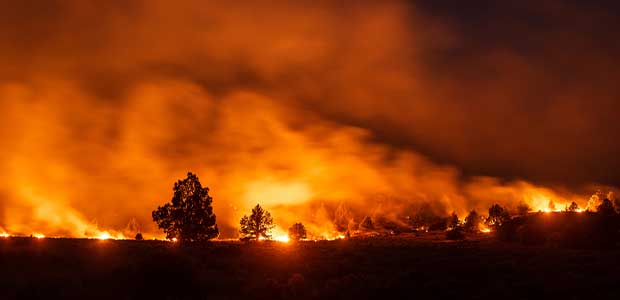
Understanding California's Strange Fire Season and What That Means for Natural Disasters
Though California has a history of wildfires, the ones seen in the last decade have been some of the worst.
- By Jane Marsh
- Mar 10, 2023
California finally saw some respite from its long-spanning drought in January, when rain and snow revitalized the land and plant life. However, experts predict that while drought relief is long overdue, the rain and snow could contribute to a much more dangerous wildfire season later in the year.
Experts reason that while the new freshwater is helping plant life grow, the dry season will cause them to wither and dry out. This large number of dry plants will significantly increase the risk of wildfires breaking out and the size of those fires.
Why has California's fire season been so erratic? Understanding more about it might shed some light on patterns for other natural disasters.
California's History of Wildfires
California has a very colorful and rich history of wildfires. They are caused by dry plants and brush igniting naturally or because of human activity. Once started, they become fueled by the wind and spread rapidly—often burning hundreds of acres of land. Unless checked, wildfires will continue to burn uncontrollably, destroying homes and possibly taking the lives of humans and animals.
Wildfires in California have been the worst they have ever been in the past decade—with the last five years being exceptionally costly. The largest wildfire in the state's history, known as the August Complex, occurred in 2020.
Unlike many wildfires that start because of human actions, the August Complex wildfire started because of a dry lightning storm, where lightning is present but no rain. Strikes ignited more than three dozen fires that eventually merged into an enormous one of unprecedented magnitude. The August Complex wildfire burned millions of acres of land for one month.
How Climate Change Causes Wildfires
Studies show that climate change might be an underlying cause—or at least contribute to—the increase in wildfires in California. Climate change caused by greenhouse gas emissions is raising Earth's temperature, causing California's dry seasons to become hotter each year. This leads to plants drying more quickly and making them less likely to recover from the dry season—massively increasing the risk of wildfires all year.
Studies show that the Earth's temperature in 2021 was 2.5 degrees Fahrenheit. This figure is expected to rise by 12 degrees in 2100.
Climate Change and Other Natural Disasters
In addition to less moisture in the ground for plants, the rising temperatures also caused California's dangerous drought in September 2021. The hotter temperatures were responsible for the record-breaking 10-day heat wave.
In addition, climate change can also be linked to record amounts of flooding and snowstorms within the past few years. The flooding was so intense that many homes, especially those unprepared for flooding, were destroyed.
Hotter temperatures lead to an increase in evaporation, creating larger clouds with more rainwater in them. This leads to more rainfall than ever before. Even more unfortunate is that heavy rain and storms are not isolated to California.
Climate change is causing natural disasters worldwide. Pakistan suffered its own set of historic heatwaves and floods in 2022. The same year, China and parts of Europe also experienced record-breaking heat.
The most notable natural disasters are hurricanes' increased frequency and strength. The rising heat of the Earth also makes the oceans hotter and leads to more moisture in the air, both of which fuel hurricane intensity.
California is on the Front Line of Climate Change
The situation in California is one of the direst in the U.S. and emphasizes the need to fight against greenhouse gas emissions. As the cycle of drought and wildfires continues, humanity has to find more ways to eliminate harmful emissions so Californians can finally see some respite.
About the Author
Jane Marsh is an environmental writer. You can keep up with her work on her site Environment.co.